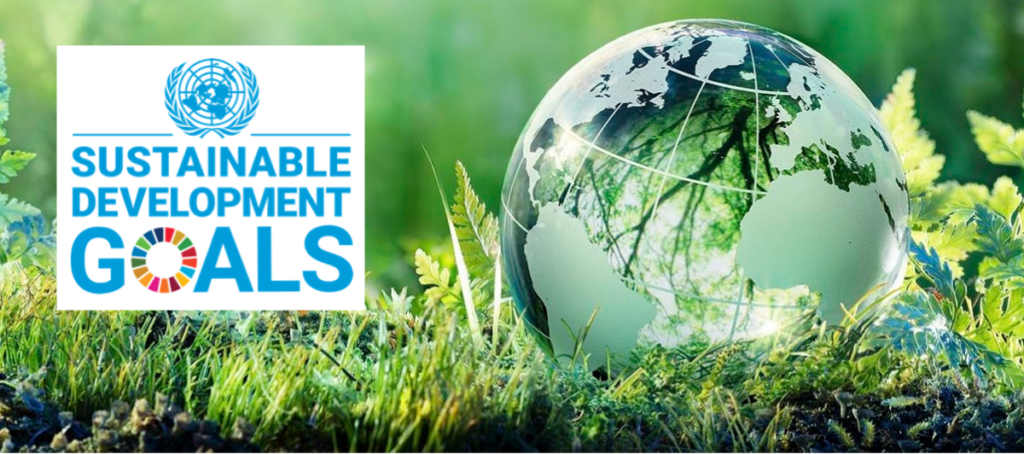We’re thrilled to announce that ChemSmog has been selected for the Circular Valley Accelerator Program—a global hub for...
How Your Company Can Advance Each of the SDGs
How Your Company Can Advance Each of the SDGs
Responsible business and investment – rooted in universal principles – will be essential to achieving transformational change through the SDGs. For companies, successful implementation will strengthen the enabling environment for doing business and building markets around the world.
Below you will find links to important initiatives and resources of the UN Global Compact – and in some instances of other like-minded organizations – to guide companies and other stakeholders to action-oriented platforms and tools that support SDG implementation.

















Goal 1. End poverty in all its forms everywhere
Goal 2. End hunger, achieve food security and improved nutrition and promote sustainable agriculture
Goal 3. Ensure healthy lives and promote well-being for all at all ages
Goal 4. Ensure inclusive and equitable quality education and promote lifelong learning opportunities for all
Goal 5. Achieve gender equality and empower all women and girls
Goal 6. Ensure availability and sustainable management of water and sanitation for all
Goal 7. Ensure access to affordable, reliable, sustainable and modern energy for all
Goal 8. Promote sustained, inclusive and sustainable economic growth, full and productive employment and decent work for all
Goal 9. Build resilient infrastructure, promote inclusive and sustainable industrialization and foster innovation
Goal 9 seeks to build resilient infrastructure, promote sustainable industrialization and foster innovation. Economies with a diversified industrial sector and strong infrastructure sustained less damage and are experiencing faster recovery. In 2021, global manufacturing rebounded from the pandemic, although the recovery remains incomplete and uneven.
Higher-technology industries performed better and recovered faster, providing a strong example of how important technological innovation is to achieving Goal 9.
Goal 10. Reduce inequality within and among countries
Goal 11. Make cities and human settlements inclusive, safe, resilient and sustainable
Goal 12. Ensure sustainable consumption and production patterns
Goal 12 is about ensuring sustainable consumption and production patterns, which is key to sustain the livelihoods of current and future generations.
Unsustainable patterns of consumption and production are root causes of the triple planetary crises of climate change, biodiversity loss and pollution. These crises, and related environmental degradation, threaten human well-being and achievement of the Sustainable Development Goals.
Governments and all citizens should work together to improve resource efficiency, reduce waste and pollution, and shape a new circular economy.
Goal 13. Take urgent action to combat climate change and its impacts
The global temperature has already risen 1.1ºC above the pre-industrial level, with glaciers melting and the sea level rising. Impacts of climate change also includes flooding and drought, displacing millions of people, sinking them into poverty and hunger, denying them access to basic services, such as health and education, expanding inequalities, stifling economic growth and even causing conflict. By 2030, an estimated 700 million people will be at risk of displacement by drought alone.
Taking urgent action to combat climate change and its devastating impacts is therefore an imperative to save lives and livelihood, and key to making the 2030 Agenda for Sustainable Development and its 17 Goals – the blueprint for a better future – a reality.
In 2020, concentrations of global greenhouse gases reached new highs, and real-time data point to continued increases. As these concentrations rise, so does the Earth’s temperature. In 2021, the global mean temperature was about 1.1°C above the pre-industrial level (from 1850 to 1900). The years from 2015 to 2021 were the seven warmest on record.
To limit warming to 1.5° Celsius above pre-industrial levels, as set out in the Paris Agreement, global greenhouse gas emissions will need to peak before 2025. Then they must decline by 43 per cent by 2030 and to net zero by 2050. Countries are articulating climate action plans to cut emissions and adapt to climate impacts through nationally determined contributions. However, current national commitments are not sufficient to meet the 1.5°C target.
Goal 14. Conserve and sustainably use the oceans, seas and marine resources for sustainable development
Goal 15. Protect, restore and promote sustainable use of terrestrial ecosystems, sustainably manage forests, combat desertification, and halt and reverse land degradation and halt biodiversity loss
Goal 16. Promote peaceful and inclusive societies for sustainable development, provide access to justice for all and build effective, accountable and inclusive institutions at all levels
Goal 17. Strengthen the means of implementation and revitalize the global partnership for sustainable development




